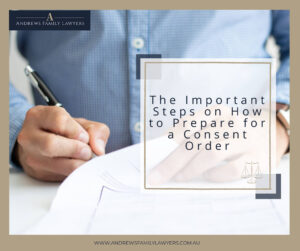You’re proceeding with a divorce settlement and need to split assets in divorce fairly with your ex-partner. You might be worrying about how to get your rightful share, and that’s completely understandable. This can be a stressful time, but there are legal pathways designed to help you achieve a just and equitable division. With the right family lawyer guiding you, you can navigate the process confidently and protect your financial interests. Once you understand your options, you can take the next step toward a stable and positive new chapter in your life.
Key takeaways
- Parties can use informal arrangements to split assets.
- Binding financial agreements are legally enforceable and don't involve court oversight.
- Consent orders are organised by agreement through the Court.
- Various factors determine your entitlements in Australian divorce settlements.
- A case study can show how an asset split may work.

How do you split assets during a divorce?
Couples have four options when splitting their assets after a divorce.
1. Non-legal arrangement
Non-legal arrangements are made when a couple splits amicably and can agree on dividing their assets without legal documentation. This kind of agreement does not prevent one of the parties from going to court later to ask for financial orders under the Family Law Act.
These informal agreements have advantages and disadvantages.
Advantages
Informal agreements offer a high degree of flexibility. Parties can negotiate terms that suit their unique circumstances. The Court applies no strict rules.
Avoiding the legal process can save significant amounts of money in legal fees. This is particularly beneficial if the parties are on amicable terms and can agree without legal intervention.
Reaching an informal agreement can be much quicker than going through the legal process.
Disadvantages
The biggest drawback of an informal agreement is that it’s not legally binding. If one party fails to adhere to the agreement, the other has limited legal recourse.
Without legal guidance, there’s a risk that one party may agree to terms that are not in their best interests. This is especially true if there is a power imbalance or a lack of financial knowledge.
Informal agreements may not adequately address complex issues like business interests or debt responsibility. This can lead to future legal complications.
How to make an effective non-legal arrangement
Step 1: Communication
Begin with an open and honest discussion about what each party wants and needs from the financial settlement.
Step 2: Compile Financial Documents
Collect all relevant financial documents such as bank statements, property valuations, superannuation statements, and debt statements.
Step 3: Consider future needs
Think about the future needs of both parties. Does one party have a reduced earning capacity or limited access to financial resources? Think about retirement, education for children, health issues, and potential changes in living arrangements.
Step 4: Seek legal advice
Legal advice can help ensure fairness and understanding of legal rights and obligations.
Step 5: Draft the agreement
Write down the agreed terms. Include how you will divide assets and debt responsibilities, and whether ongoing financial support will be paid to the financially weaker spouse.
Step 6: Review and revise
Ensure both parties agree with all of the terms. Be open to revising the agreement to address any concerns.
Step 7: Sign the agreement
While the agreement is informal, the parties should sign it. This creates a sense of commitment to the terms.
Who gets what?
Informal agreements can divide property in any way the parties choose. This can make informal agreements risky, as one party may not get their proper entitlement. Some considerations include:
Agreements made during the marriage. Some couples discuss potential arrangements during the relationship. That might seem like an awkward conversation. But having an honest discussion can make the process easier during a divorce settlement.
Legal and professional advice. “If we’re not going to court, why would I need legal advice?” That’s actually why you may need it. The Court can’t assist you with a fair settlement if you keep your arrangement private. Working with a lawyer who’s experienced with settlements may help you avoid poor decisions.
Future needs. You’re entering a new life chapter. Your circumstances will likely change dramatically. Consider the future when dividing assets. Ask yourself some questions, such as:
How easy will it be to re-enter the workforce?
What are my medical needs?
What savings do I have?
Do I have family I can turn to?
A binding financial agreement is a legal document that can be entered into before, during, or after the relationship. When entered into before marriage, they are referred to as a prenuptial agreement. Binding financial agreements are final and enforceable.
How to form a binding financial agreement
A binding financial agreement is a legal document that can be entered into before, during, or after the relationship. When entered into before marriage, they are referred to as a prenuptial agreement. Binding financial agreements are final and enforceable.
How to form a binding financial agreement
Step 1: Communication
Both parties should openly discuss their financial situations, objectives, and concerns regarding the agreement.
Step 2: Disclose finances
Both parties must make a full and frank financial disclosure. This may include bank accounts, stock portfolios, and real estate. You must also factor in debts to understand the net asset pool.
Step 3: Seek independent legal advice
Each party must seek independent legal advice. The lawyers will explain the party’s rights and obligations under the agreement. The party should understand the advantages and disadvantages of entering into the BFA.
Step 4: Draft the agreement
One party’s lawyer usually drafts the agreement. The document outlines terms for asset division and any spousal maintenance arrangements.
Step 5: Review the agreement
The other party and their lawyer review the draft. Negotiations may take place to reach mutually agreeable terms.
Step 6: Sign the agreement
Once both parties are satisfied, the BFA is signed. The signatures must be witnessed by the lawyers who provided the legal advice.
Step 7: Independent legal advice certificate
Each lawyer must provide a certificate confirming that independent legal advice was given.
Who gets what?
When getting independent advice, your lawyer will advise you on whether the division is reasonable. Here are some considerations:
Practicality of the division. Consider how easily assets can be transferred, the ability of each party to manage certain assets, and the desirability of achieving a clean break to avoid ongoing financial ties. This might affect who receives the family home or gets responsibility for a share portfolio.
Superannuation interests. Superannuation is treated as property. Consider how superannuation interests should be split. Often, one party has less superannuation than the other. It may be appropriate for that party to get a share of their former partner’s super interest.
Effect on children. The impact of the property division on the welfare of any children is critical. Ensuring children have a stable environment and their financial needs are met is paramount. This means that the primary caregiver may receive a more significant share.

Learn more: What Is a Binding Financial Agreement?
3. Consent orders
A financial consent order formalises the division of assets and financial obligations after a relationship ends. It’s approved by the Court, ensuring compliance with the agreed terms. This order can cover property and spousal maintenance. Consent orders don’t deal with child support.
How to apply for consent orders
You must fill out an Application for Consent Orders. Having an experienced divorce lawyer will help you to understand the needs and rights of both you and your ex-spouse.
Before the Court will accept financial consent orders, it must be satisfied that the proposed property division is “just and equitable”.
How are assets divided in the Family Court?
You may have been led to believe that anything in your name will stay with you, and anything you own jointly with your ex-spouse will be split between you. However, this isn’t always the case.
How assets are divided in a divorce settlement has more to do with the contributions and needs of each person than whose name is attached to what item. This ensures one person isn’t disadvantaged. For example, if one person were the children’s primary caregiver, they would likely have less financial stability or fewer retirement savings.
A four-step process calculates a just and equitable outcome under the Family Law Act.
Valuation of assets.
Assessing the contributions of both parties.
Determining future needs.
Evaluating the consent order’s impact.
Step 1: Valuation of Assets
The first step of the process is to identify and value the property pool. This includes assets you own jointly and assets and liabilities you own individually. Each party must fully disclose their financial circumstances.
Assets and liabilities that must be considered in the pool include those acquired before and during the relationship. Any marital assets or debts acquired after the relationship ended could also be considered. This is because the asset pool is valued at the time of the settlement, not at the point of separation or divorce settlement.
You may feel entitled to full rights over an asset you acquired before the relationship. You might have a case, particularly if your ex-spouse made no contributions to the asset. However, all assets and liabilities must form part of the asset pool at this first stage.
Step 2: Assessing the non-financial and financial contributions of both parties
This step is about understanding what each of you brought to the relationship. Financial contributions can include wages, government allowances, inheritance, dividends from shares, or any other income you receive. Not all contributions to a relationship are financial.
Non-financial contributions that need to be considered include being a caregiver of children and a homemaker. Other examples may also apply to your situation, such as renovating a property or even indirect contributions from family members. These can include:
Providing childcare.
Contributing to a deposit to purchase a property.
Being a guarantor on a home loan.
Each of these contributions is assessed and compared against the asset pool to determine the first split of assets between the parties.
Step 3: Determining Future Needs
Now that all the assets, liabilities, and contributions to the relationship have been assessed, the settlement must consider each party’s financial future.
Several things need to be considered for each person. These include their age, health, future earning capacity, employment prospects, and financial resources. The Court will also consider:
Who will be responsible for looking after the children of the relationship?
Individual living requirements.
The impact the relationship may have had on each person’s earning capacity.
Step 4: Evaluating the Impact
The final step in the process is for the Court to consider whether their split of the assets and debts is just and equitable for you and your ex-partner.
Some men believe they will be worse off in a financial settlement even if they have been the primary income earner in the relationship. This is usually untrue, as men tend to rebound quicker financially post-divorce than women. This is because women are often the primary caregivers of children. Single older women can be the most disadvantaged, particularly in their earning potential.
This may seem complicated, so it’s important to seek the advice of an experienced family lawyer. They can simplify the process and ensure you receive your entitlement.
What to consider when dividing assets
Remember that debts, as well as assets, are split in a financial settlement. If one partner is given a more significant portion of the asset pool, they may also be given more debt obligations.
Counting assets and liabilities and considering contributions and future needs sounds straightforward. However, this is a difficult process for many couples. It can be even more challenging for amicable couples who want to do right by one another and are unsure how to proceed without rocking the boat.
A common challenge couples face is when they get fixated on a percentage they believe they deserve. While assets are rarely divided 50/50, there is no set percentage in Australia’s Family Law Act.
The split will be different for each couple. It’s better to focus on the goals and needs of each person to reach the fairest and most equitable settlement. Use percentages as a sense check rather than the end goal.
4. Litigation
Litigation is where the Family Court determines how the couple’s assets and liabilities will be split when agreement is impossible. This is the most lengthy and costly process. It usually requires a court proceeding. Litigation is generally a last resort due to its emotional and financial impact on families.
Court action may be necessary when:
Agreement isn’t possible.
Dispute resolution has failed.
Family violence concerns make mediation unsafe.
Family violence concerns make mediation unsafe.

What am I entitled to in a divorce settlement?
There is no set percentage under Australian law when dividing assets. This can make splitting your assets and liabilities challenging. Divisions will be different in each circumstance.
What is the average split in a divorce settlement Australia
A 50/50 split is rare. The average split tends to end up around 60/40 or even 70/30.
A 60/40 split tends to be the most common division in Australian divorce settlements. For many couples, one partner will contribute more financially, while the other may contribute more in caring for children and looking after the home.
In these situations, it is common for the party making direct financial contributions (often a male) to end up with 40% of the assets. The partner who contributed mainly non-financially (usually female), may get 60%. While this may seem unfair at face value, the Court makes adjustments based on the future needs of the individuals.
What determines the average split of an asset pool?
One party often has more earning capacity and income and is therefore deemed able to recover from the divorce settlement more quickly than their ex-spouse. The partner who contributed mainly non-financially to the relationship typically has a lower earning capacity than their ex-spouse. In this case, they would be awarded a higher percentage to address their future financial needs.
A 70/30 split in the division of assets is rarer. However, it can still happen. This usually occurs when the property pool is large (over $10 million), and one partner contributed most of the property.
You may also see a 70/30 split when one partner is in a hurry to finalise the settlement and may want to settle for less than they are entitled to. This is when it is essential to seek advice from an experienced divorce lawyer. They can negotiate for you to help you walk away promptly with an appropriate division.
When are 50/50 splits considered?
The longer a relationship lasts, the less critical marital contributions tend to be in the Court’s decision. It’s understood in most cases that over a long period, the total contributions of each party even out. This means that a 50/50 split may be appropriate.
In short-term relationships, where assets were acquired only jointly, there are no children, and the couple earns similar incomes, a 50/50 split may also be the fairest division.
Which assets are considered in a divorce?
It might surprise some couples what assets and liabilities are considered in a divorce settlement. You often need to consider assets brought into the relationship, acquired both separately and jointly during the relationship, and even assets and liabilities gained after the relationship.
Usually considered in the asset pool are:
Property owned both individually and jointly.
The respective income of each party.
The superannuation of each party.
Debts owing by one or both parties.
Some financial resources may not form part of the property pool, but may still have an effect on a settlement. An example may be an expected pay out from a personal injury claim. If the party hasn’t received the money by the time of the settlement, it may still constitute a future financial benefit.
How can I protect my assets from divorce?
A BFA may enable a party to create a financial agreement during a relationship. When entered into before marriage, a BFA is sometimes referred to as a prenuptial agreement. While some people think a prenup is only used when the marriage is expected to fail, you can compare it to health insurance. Most people don’t expect to fall ill. However, they still have health insurance.
Prenuptial agreements may allow you to establish how current and future assets will be handled in a property settlement. For example, you may purchase property or receive an inheritance post-separation, which you want to retain. With the help of a divorce lawyer, you may organise a financial agreement that accounts for such events.
Can I get divorced without a financial settlement?
Under Australian law, divorce and financial settlements are handled separately. You can file for a divorce without a financial settlement. However, you must settle financial matters within 12 months of divorcing. If you miss this deadline, you might lose your right to a settlement. This isn’t recommended as you may be entitled to more than you think. You also don’t need to wait until you have divorced to start dividing assets. You can seek financial orders as soon as you separate.
Can a divorce settlement be reopened?
You can apply for a property adjustment. Your application for the adjustment must be made within 12 months of your divorce being finalised. If you do not apply within this time limit, you must obtain special permission from the Court.

Divorce property settlement example
It’s human nature to seek out similar situations to understand what we should do and imagine what outcome we might expect. The Australian Government has supplied this case study in the Property and Financial Agreement and Consent Orders Guide issued by the Attorney-General’s Department.
Case study
Drago and Constance are separating. They have been together for 15 years and married for eight years. Drago works full-time and earns $87,000 a year. Constance works part-time and makes $68,000 a year.
They have two children, aged 6 and 4. Using the negotiation guide, they arrived at the following negotiated property settlement proceedings and will seek a property consent order from the Court.
Joint Assets and liabilities
A family home valued at $670,000 with a $250,000 mortgage. Net value: $420,000.
Family car #1 Subaru Forester valued at $24,000 with a $12,000 loan. Net value: $12,000.
Family car #2 Holden Commodore. Net value: $8,000.
Furniture. Net value: $25,000.
Joint savings account. Net value: $15,000.
Westfarmers shares. Net value: $10,000.
Joint transaction account. $1,200, with a $500 overdraft. Net value: $700.
Joint credit card debt. $8,000.
Individual Assets and liabilities
Drago’s Superannuation. Net value: $300,000.
Constance’s Superannuation. Net value: $120,000.
Drago’s savings account. Net value: $20,000.
Drago’s boat. Net value: $5,000.
Identifying their contributions
Both Drago and Constance have worked throughout their relationship. Since having children, Constance has worked part-time to care for the children two days a week. She also takes the children to and from day care and school.
While Drago and Constance try to share caring responsibilities for the children, Drago travels to work. Therefore, Constance is often solely responsible for caring for the children. They also both acknowledge that Constance’s ability to earn superannuation was limited by extended maternity leave and the fact that she has been working part-time.
Based on Constance having the majority of childcare responsibilities, she and Drago have agreed that the property should be split with an adjustment in Constance’s favour.
Considering the section 75(2) factors
Section 75(2) of the Family Law Act guides how the Family Court considers spousal maintenance in a divorce. This section lists factors the Court must consider when determining what is just and equitable in maintenance matters.
Drago and Constance are both in their late 30s and are likely to be able to work until retirement. They agree that the children should live at each of their houses and acknowledge that Constance will likely have significantly more caring responsibilities than Drago.
This will impact Constance’s ongoing ability to work full-time. They agree that Constance should receive spousal maintenance to reflect her lost potential earnings.
Do you need help with a divorce matter? We can assist you.

From our clients
Peter is the person for you if you want a calming, patient, honest, reliable and very knowledgeable/experienced lawyer. Just what was needed at what was a stressful time when dealing with family law matters. I highly recommend him and his team.
Bron M
Peter provides exceptional service, is understanding and compassionate. He made sure everything was explained, was open and honest and always had my best interests at the forefront. I would recommend Peter to anyone needing a family lawyer.
Sheree A
Peter and Lisa are outstanding. They helped me navigate an extremely difficult personal and legal situation. They treated me with kindness and respect. Peter provided practical, no nonsense legal advice to achieve outcomes that are in the best interests of my kids. I am so grateful to them for their assistance.
Jennifer E
Conclusion
If the prospect of unwinding your financial assets after divorce seems stressful, don’t be worried. There are several ways you can divide property that ensure you’re treated fairly. A good lawyer will help you assess your options and get your entitlement.
Peter was super helpful with all of my legal needs. Super affordable and has a wealth of knowledge to assist with my marriage split. Definitely recommend him to family and friends.
– Kate Gallagher
If you need assistance with Australian family law matters, Andrews Family Lawyers can help.
If you need assistance with family law matters, Andrews Family Lawyers can help.
FAQ:
What goes into the asset pool?
Do we have to be divorced before we divide assets?
What are the time limits to start a court case about property?
How does the court decide a fair split?
Are debts included?
How is superannuation treated?
What’s the difference between consent orders and a BFA?
What steps are involved in splitting assets after divorce in Brisbane?
Do Brisbane courts always split property 50/50?
How is property owned before marriage treated in QLD?
What documents do I need for asset division in Grange?
Can superannuation be split in a Brisbane divorce?
- Author bio: “Reviewed by Peter Andrews,family law specialist in Grange, Brisbane.”
- Last-reviewed date: September 2025
- Cite Family Court of Australia, QLD Gov, and local Brisbane legal resources




